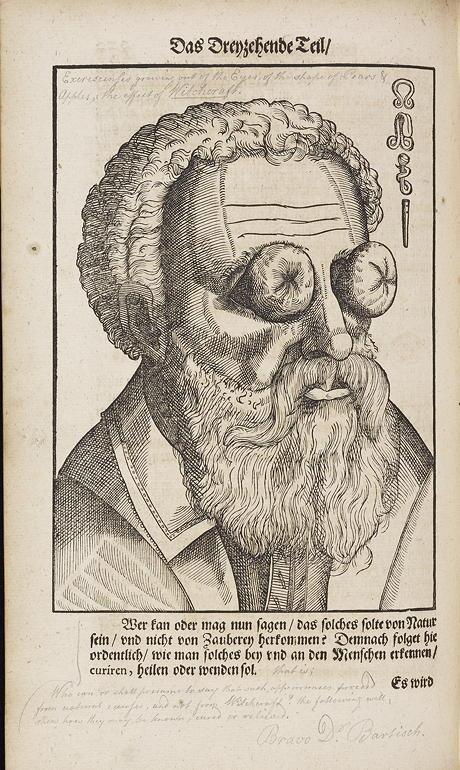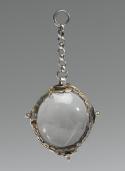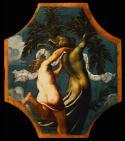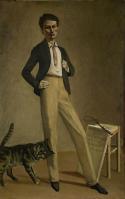Art Of The Day Weekly
#524 - from 6 September 2018 to 12 September 2018

Georg Bartisch, Disease of the eyes caused by witchcraft, from Opthalmodouleia, Dresden, Germany, 1583. Ink on paper, 25 x 42 cm © Bodleian Library, University of Oxford.
IN THE AIR
Why we need magic
OXFORD – Our contemporary world is well limited, we live in times of progress and reason (though it is not always obvious when we look at what happens at the White House or in other centres of power). With this overpowering materialism, dreams and metaphysics don’t seem to have a place in our world. Talk of New Age, fake news, the temptation of bringing golden pre-industrialist periods of history back to life – as desperate as these can be, from dogged food diets to the refusal of vaccines – feed on them. That is because a part of us always has an appetite for what cannot be explained. We all need our dose of magic. The surprising success an exhibition at the Ashmolean Museum in Oxford has met seems to confirm this appetite. “Spellbound”, the name of the exhibition, covers centuries with objects we don’t always understand. While a print representing witches, a coral brooch or a unicorn’s horn (actually made of narwhal) means something to us, we can’t say the same about a “Witches’ ladder”, a “Magic mirror”, or this strange “prognosticator”, a copper disk on which a metal arrow is used to calculate propitious bloodletting times according to the position of the moon. While looking through this surprising kunstkammer that gets our minds ticking, we discover that certain practices we thought we had invented actually have a long history of their own. One good example is the thousands of standard locks hooked on to the Pont des Arts in Paris: their beautiful golden ancestors date back from the 16th century, were personalised, and were worn as a medallion. They surely were much more handsome.
• Spellbound at the Ashmolean Museum, from 31 August 2018 to 6 January 2019.
OBJECT OF THE WEEK

John Dee’s purple crystal, said to have been given to him by the angel Uriel Europe, 1582. Metal and quartz, 8.4 cm © Science Museum, London.
When John Dee spoke to the spirits
Among the very fascinating objects presented at the Ashmolean Museum, a quartz pearl set in a metallic fitting holds a very particular role. It is part of the collection of the Science Museum of London, but belonged to John Dee (1527-1608), a mathematician and a whimsical character, who was the advisor and astrologist of Queen Elizabeth I. In his moments of leisure he was also a magician. He grew tired of the time it took to acquire knowledge by the traditional means, and tried to speed the process up by invoking the spirits directly. To get in contact with them he would use this arcane instrument which he claimed to have received from the angel Uriel on a foggy November day in 1582. He would question the spirits or decipher messages sent from above in the transparent thickness and the reflections in the crystal. Mostly this he did to relieve the pains of humanity, and also to get out of a pinch. It was somehow limited though, as he never found the treasure he so coveted.
EXHIBITIONS OPENING NOW

Tintoret, Deucalion and Pyirhra praying, ca 1542, Modena, Galleria Estense © concession Mibac – Archivio Fotografico delle Gallerie Estensi
Tintoretto turns 500 years old
VENICE – Recently in Paris we were able to discover the youthful years of the Venetian troublemaker. The legend tells us that he was kicked out of Titian’s atelier, as the great master felt threatened by the talent of the young man. He held no grudge against him, but spent his life trying to reach the perfect synthesis, by combining specifically the colour of Titian to Michelangelo’s drawing. The interest of seeing this retrospective in Venice to celebrate his 500th anniversary – even a few months in advance- is obviously to see his main creations, his large mural compositions in situ, at the Doge’s Palace or at the Scuola di San Rocco. A number of international loans step in to give two parts to the itinerary of Jacopo Robusti (his real name): his youth is presented at the Accademia, while his more mature works are at the Doge’s Palace. His creativity over six decades, and his death at the age of 75, never helped him lose his nickname meaning “little dyer”, as he was the son of a silk dyer.
• Il giovane Tintoretto at the Accademia, from 7 September 2018 to 6 January 2019.
• Tintoretto 1519-1594 at the Doge’s palace and, from 7 September 2018 to 6 January 2019

Balthus, The King of Cats, 1935, oil on canvas, 78 x 49,7 cm. Musée cantonal des Beaux-Arts de Lausanne. Donation Fondation Balthus Klossowski de Rola, 2016 © Balthus Photo : Etienne Malapert, Musée cantonal des Beaux-Arts de Lausanne.
Balthus at home
BASEL – The name of Balthus, who was director of the Villa Médicis (French Academy in Rome) while carrying on with three love affairs – of which one with a young Japanese student who would become his last companion - can seem somehow heretic today. The Metropolitan Museum for example recently had to face an attempt to take down his famous Thérèse Dreaming, as certain visitors found it too perverse. We will be lucky though to see her in this retrospective, as it was brought up to the country where he chose to live his last years. On the other hand, the show does not include the very controversial Guitar Lesson which spent one day n the hands of art dealer Ernst Beyeler before becoming the property of Greek tycoon Stavros Niarchos. Everyone is eager to see the much awaited confrontation between two monumental works, the representation of Paris set like in a medieval fresco by the Lorenzetti, Passage du Commerce Saint-André (on a long term loan to the foundation) and The Street.
• Balthus at the Fondation Beyeler, from 2 September 2018 to 1 January 2019.
Marginal Japan
PARIS – The Halle Saint-Pierre did not wait for current Japanese season to look into Japanese art brut. It had already done so in 2010, and is renewing the challenge with a study of 36 artists, combining “historical” figures and younger creators – certain works date from 2016-2017.
• Art brut japonais at the Halle Saint-Pierre, from 8 September 2018 to 10 March 2019.
BOOKS
Japanese tattoos
No person who spends his vacations on the beaches in Europe – and in Italy in particular! – could spend a single day without seeing all sorts of tattooed anatomies parade across the beach. These can be butterflies, serpents, as well as barcodes or numbers –as if the death camps had not warned us against this type of inscription. As we all know, tattoos have a long history intertwined with that of marginal groups or groups with a strong identity, such as prisoners, or sailors. Now it has become a universal fashion. This essay, written by a person who is very knowledgeable of the country, where he spent years as the correspondent of newspaper Le Monde - teaches us Japan underwent a similar fad in the beginning of the 19th century. Not only among stable boys, rickshaw drivers, prostitutes, and various members of the mob, but among the uprooted proletariat in the growing cities. It reached such a point that Shoguns decided to forbid all tattoos, both decorative as well as ignominious – and punish the culprits with a fine or prison. Photograph notebooks show the creations of current masters – Horihide or Horiyoshi II – and a snapshot on page 129 sends shivers down the spine. It is an object from the collection of Doctor Fukushi, kept under glass at the university of Tokyo, a human skin. The name of the generous donator is not given.
• Le corps tatoué au Japon by Philippe Pons, Gallimard, 2018, 160 p., €25.

